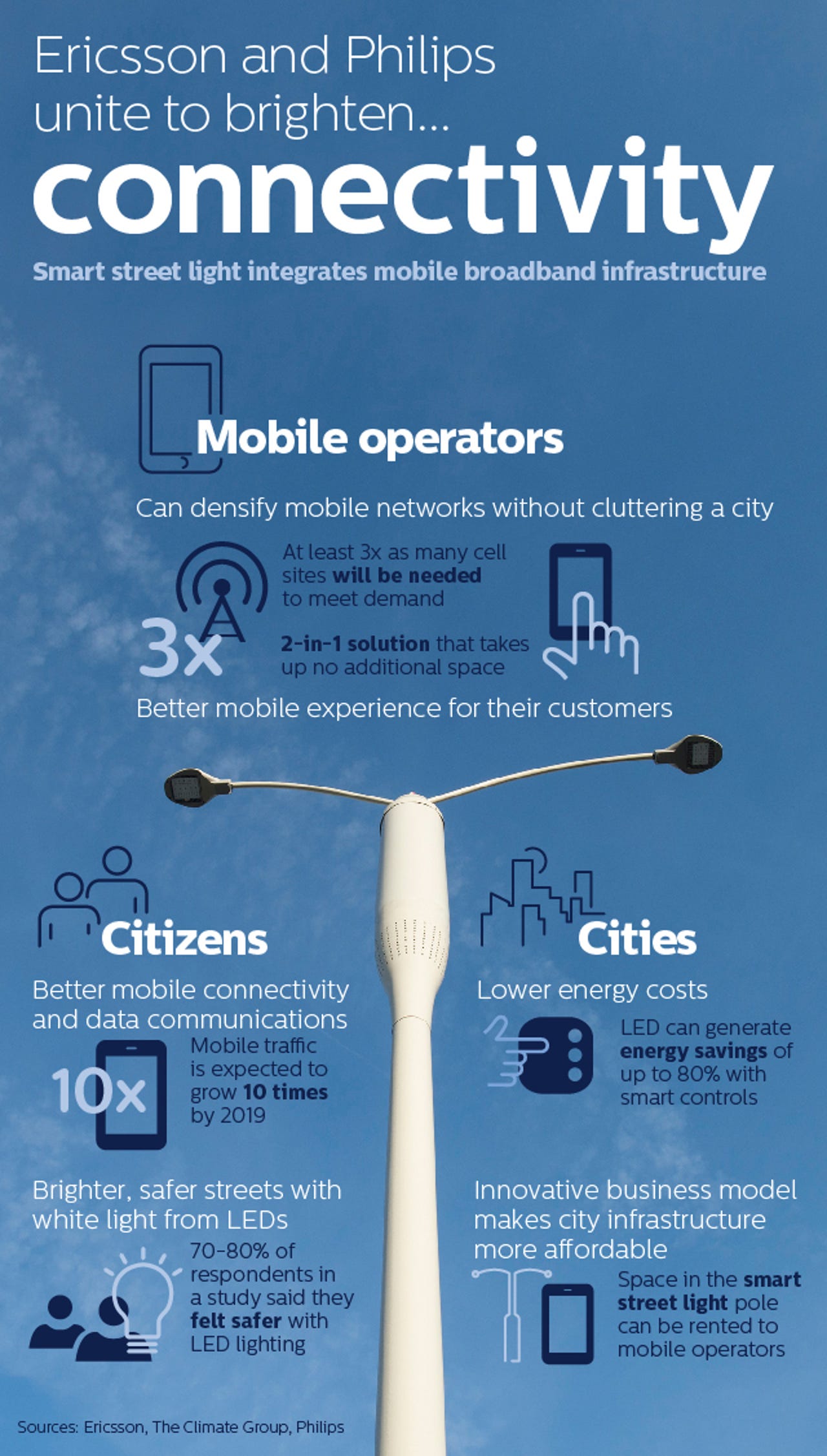This LED street light also boosts mobile broadband in cities

More than half of the world's population live in cities. And, according to the U.N., seven out of 10 people in the world will live in an urban area by 2050. Population growth in cities won't just increase road traffic, it also means more smart, connected devices vying for traffic on mobile broadband networks.
That's why Philips has teamed up with Ericsson to tackle two issues in cities with one piece of infrastructure.
Their new Zero Site smart street light will use LED lighting, which can boost a city's energy savings by as much as 80 percent. But the new lighting is being marketed as ''lighting-as-a-service.'' Not only will it have energy-efficient lighting, but it will also include space for mobile operators, working with Ericsson, to rent out and install their mobile broadband infrastructure.
The idea here is that cities can become more efficient with infrastructure they already use and solve the problem of high mobile data capacity in cities, where sites for mobile infrastructure can be hard to come by. Here's how Zero Site works, in infographic format:

It's an enticing pitch. But, as David Meyer points out at Gigaom, cities should carefully weigh their options before they make the investment:
[I]t does concern me that one telecoms supplier’s equipment would be embedded into the very fabric of the city in such a comprehensive way, with the lampposts themselves designed to hold Ericsson base stations. Wouldn’t it risk locking cities – and indeed the carriers operating in those cities – into using Ericsson and Philips for a long time?So while Zero Site is a fascinating product, it isn't without risks to municipalities.
This post was originally published on Smartplanet.com